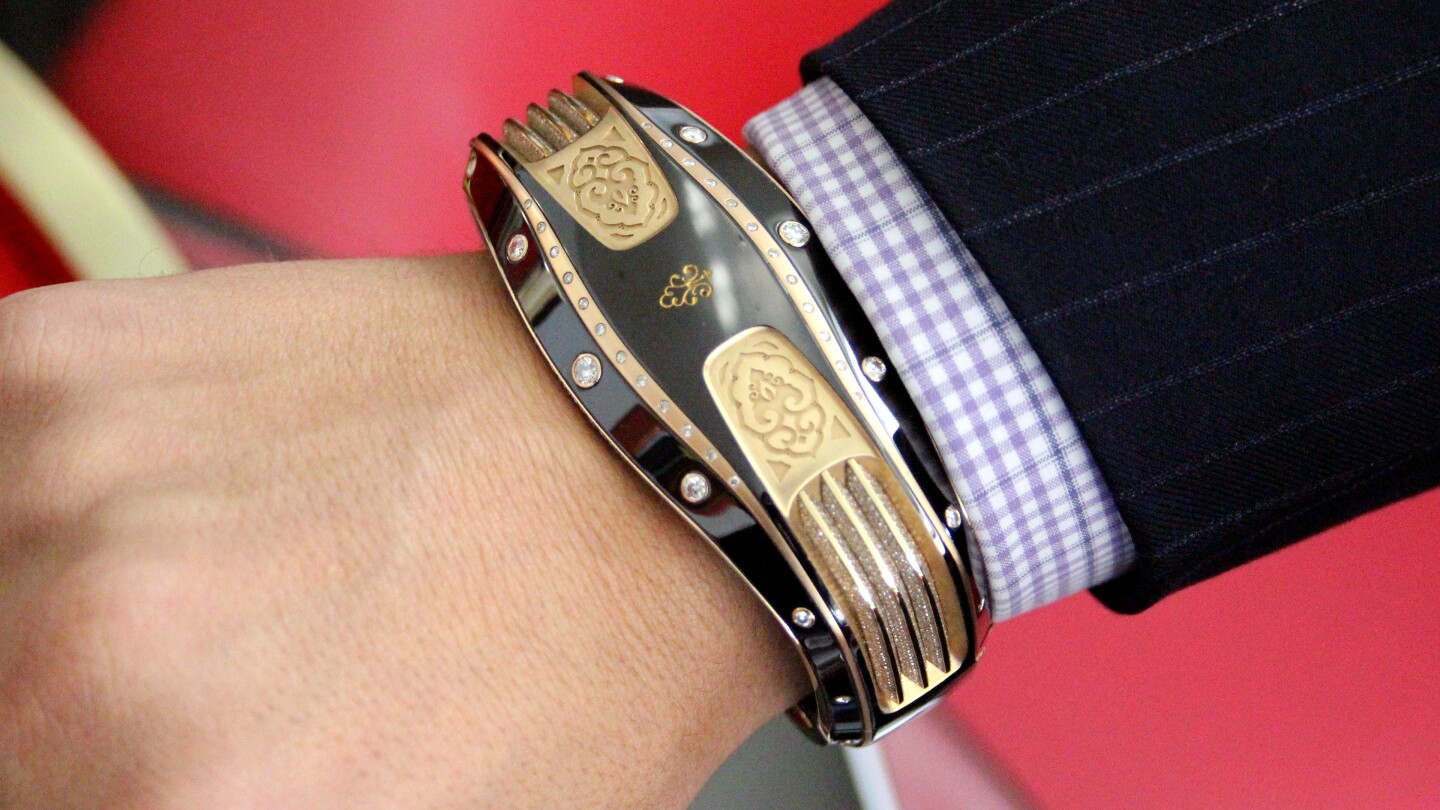Christophe & Co's high-end Armills are luxury jewelry pieces that offer optional built-in technology, running for a year or more on a single charge. The highest-end model, the Apollo, retails for a US$149,000, making it just about the priciest wearable around. We got the chance to check out the bracelet at Baselworld 2015.
While describing the entry price for the bracelet as "steep" would be a vast understatement, Christophe & Co's Aleksandr Bernhard was keen to point out that the bracelet should be viewed as a high-end jewelry piece first, wearable tech product second. Discussing the piece at Baselworld, where six-figure watches and jewelry items are comparatively commonplace, provided perhaps the best context for this.
However, while the company might not want us to view the product as a technology piece first and foremost, it's difficult to get past the sky-high price tag when discussing the tech on board.

Optional technology
The wearable tech side of the Armill is entirely optional, and takes the form of an upgradable module, allowing it to stay technologically relevant as time goes on. It makes use of NFC and Bluetooth LE, and features a kinetic energy generation system that recharges the battery using the motion of the user's arm, allowing for a year or more between charges.
"We decided to take a watch movement similar to an auto quartz, but create a lot more electricity and actually charge the electronics." said Bernhard. "This is something that, when I had the idea, I wasn't sure we'd be able to do it, because nobody had done it with wearable tech before."
What's interesting about the technology side of the Christophe & Co Armills is that the company is willing to tailor its abilities to the specific requirements of the client. For example, if the customer wants the bracelet to, for example, unlock their car or work as a contactless payment method, then the company will work to develop the module to make those desires a reality, even if it takes months of development.

The company is in the process of creating a network of partners around the world, who hold prestigious events – such as Formula One races – where the Armill will act as a physical entry key using the built in NFC technology. Users can also set up the device to message a specific contact, such as a personal assistant, by tapping a combination on the built-in capacitive sensor.
A luxury construction
All three versions of the Armill – the Apollo, Orion and Virtus – have ceramic shields that the company claims exhibit a level of complexity and precision never before seen. The manufacturing process involves calculating the exact degree of shrinkage that will occur during the sintering process – something that's made extremely difficult due to the small-scale, precise dimensions of the product.

"From a manufacturing perspective, nobody has ever done a piece of ceramics like this." Bernhard told Gizmag. "People in the ceramics industry have told us 'you can't do that, it's impossible', and we did it. The ceramics are more expensive than anything else on the piece."
The Apollo Armill that we saw at Baselworld features more than 1,500 micro pavé set GVS diamonds. All the gems are fair trade, and each and every one is set by hand under a microscope. The engraving is carried out by UK artist Maryam Golubeva, with three different designs available, each tailored to different markets.

Despite the delicate nature of its construction, the Apollo Armill feels solid and substantial in the hand. It has a reassuring weight to it and features a custom-made clasp that's designed to ensure the pricey wearable won't slip off your wrist.
Designed in conjunction with Pininfarina, the piece exhibits the same quality of finish you'd expect from a luxury sports car. The opulent design certainly won't appeal to all tastes, but the construction feels every bit as high-end as its creators insists, with the engraving, hand-set gems and glossy ceramic finish giving it a luxurious feel. Given the price point, we wouldn't expect anything less.
The Armills – and the Apollo in particular – are targeted at the same audience that would usually be interested in ultra high-end watches and jewelry pieces, with each bracelet selling for US$149,000. The majority of the smart features are similarly tailored towards ultra wealthy clientele, and would be of less value to your average consumer, not to mention that they could mostly be handled by wearables costing a tiny fraction of the Armill's asking price.
Reiterating a jewelry-first perspective on the product, Bernhard stated, "This is built to a standard, and to an ideal, and the price is the price. It's not for everybody, it's very specific, very small volumes, it's made in the UK so it's extremely expensive to make, but it's made at the very top level."
Only 25 of the Apollo variant will be constructed, while the Orion and Virtus models will sell for $93,000 and $75,000, limited to 100 and 300 units worldwide.
Source: Christophe & Co












